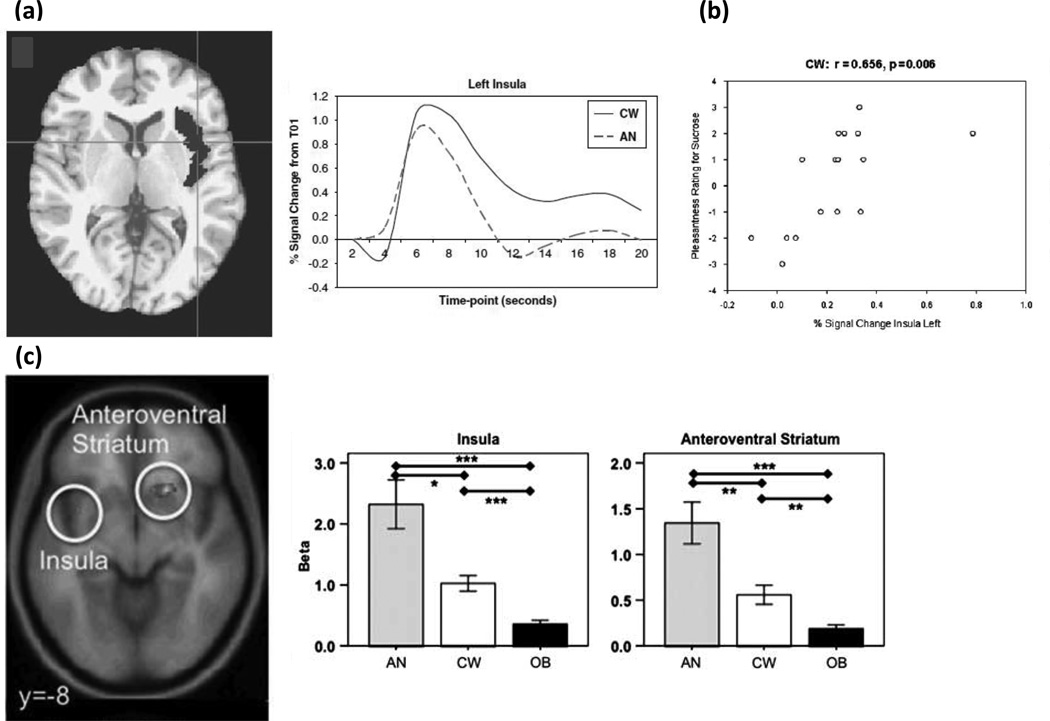Figure 3.
Altered neurocircuitry of taste consumption and anticipation in AN revealed with fMRI. (a) Decreased taste-related (sucrose and water) BOLD response was found for recovered AN compared to control women (CW) in the left insula region of interest (ROI; highlighted in gray in axial view) and left ventral putamen (not shown). Corresponding time course of the BOLD signal as a mean of 16 AN and 16 CW in the left insula ROI is depicted.82 This suggests in AN the insula may not accurately encode gustatory signals, perhaps as part of a more widespread defect in interoceptive awareness, or perhaps encompassing altered ability to gauge satiety or hunger “set-points.” Insula responses may also be modulated by reward determination (e.g., in anterior ventral striatum circuits, specifically the nucleus accumbens) which may fail to properly recognize, scale, or modulate reward response in AN. (b) In support of altered interoceptive/reward processing, BOLD response is correlated with pleasantness rating for sucrose for control women in the left and right (not shown) insula but not for recovered AN (not shown).82 (c) In response to a taste reward conditioning task that has been associated with activation of dopamine reward circuits, computational model-derived data revealed ill underweight AN had greater brain response during anticipation of taste in the anteroventral striatum, insula, and prefrontal cortex compared to control women and obese (OB) women.86 These results suggest that brain reward circuits are more responsive to food stimuli in AN, but less responsive in obese women. The mechanism for this association is uncertain, but these brain reward response patterns could be biomarkers for the respective weight state.

